Another mini PC, but this time, Geekom has gone big with its latest addition: the GT1 Mega. This small box, no bigger than a paperback book, hides under its hood performance worthy of the best office towers.
With its latest generation Intel Core Ultra processor, and quite a few other things, the GT1 Mega promises to shake up our perception of what a mini PC can accomplish. It is placed frontally with the Mac mini M4.
Technical sheet
| Geekom GT1 Mega | Features |
|---|---|
| Processor | Intel Core Ultra 9 185H (16 cores, 22 threads, up to 5.1 GHz) |
| GPU | Intel Arc (iGPU) |
| RAM | Up to 64 GB DDR5-5600 |
| Storage | 1 x M.2 2280 PCIe 4.0 (up to 2 TB) + 1 x M.2 2242 SATA (up to 1 TB) |
| Connectivity | Wi-Fi 7, Bluetooth 5.4, 2x Ethernet 2,5 Gb/s |
| Ports | 2 x USB4, 5 x USB 3.2 Gen 2, 1 x USB 2.0, 2 x HDMI 2.0, 1 x Jack audio |
| Dimensions | 139 x 132 x 43,5 mm |
| OS | Windows 11 Pro installed |
The GEEKOM GT1 Mega makes no compromises on components, it offers the best currently available on the mini PC market. Moreover, the integration of an Intel Core Ultra processor with NPU dedicated to AI is a first on a PC of this size.
The tested copy was loaned to us by Geekom.
Ergonomics and design
The GT1 Mega is the size of a classic mini PC. It is compact. Geekom has achieved the feat of concentrating considerable power in a case measuring barely 14 cm on a side. Feat… like the Mac mini M4. The two cases share almost the same dimensions.
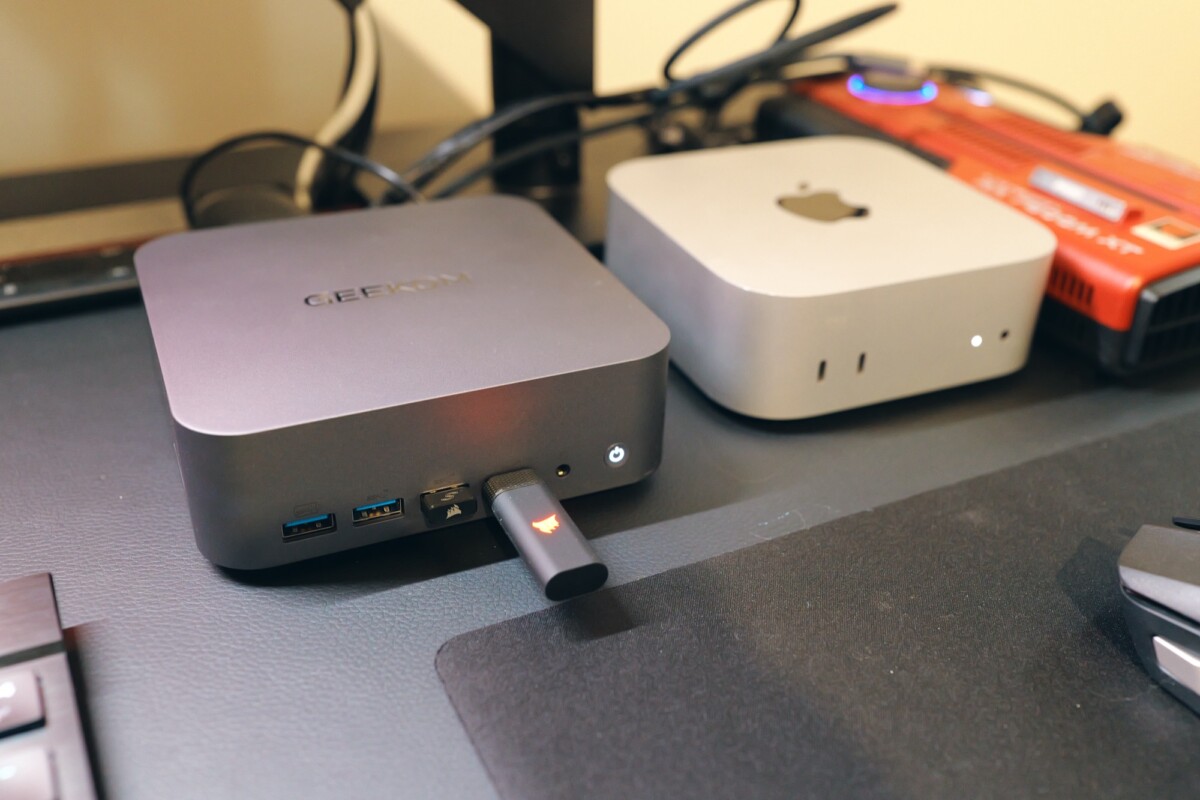
The design is sober, with a brushed aluminum chassis. We are really facing what we could call the Mac Mini under Windows: power, good design quality… and not only that.
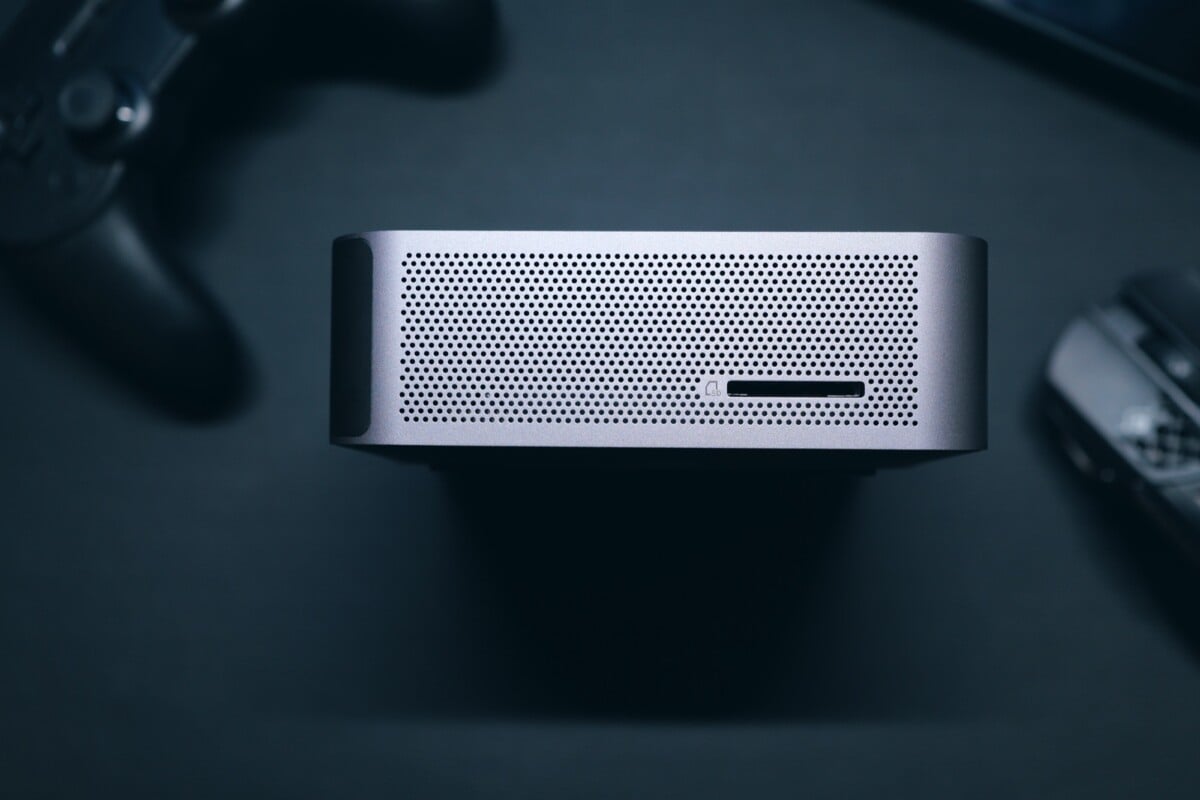
The front of the GT1 Mega is particularly well thought out, with no less than four USB 3.2 Gen 2 Type-A ports. It must be said that many devices still use this format. On the other hand, a USB-C port on the front would have been nice, but its absence is not prohibitive.
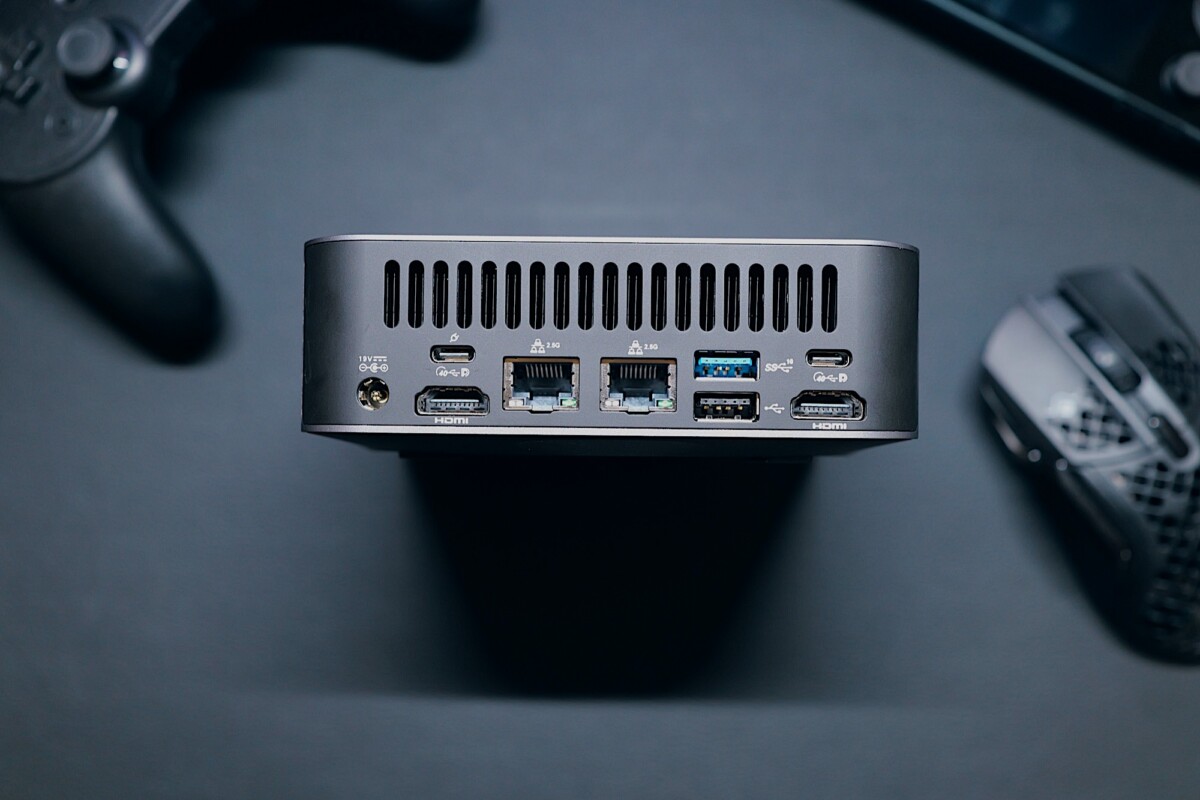
At the back, we find a real festival of connectors. The two USB4 ports are the ones that interest me the most, they offer speeds of up to 40 Gb/s and the possibility of connecting external GPUs (which we did). Dual HDMI 2.0 ports and display support via USB-C allow you to connect up to four displays simultaneously, including one in 8K.
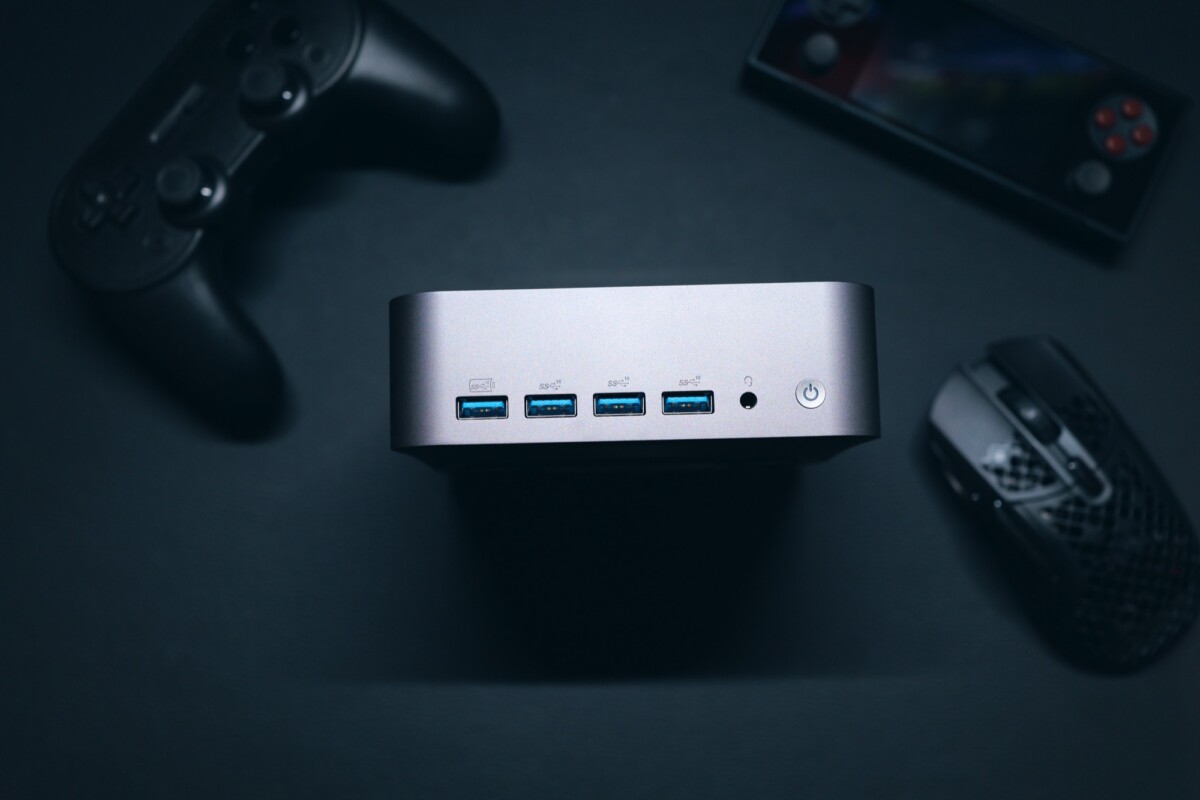
The presence of two 2.5 Gb/s Ethernet ports offers the possibility of doing many more things with this mini PC… on the network side. We would have liked to have 5 Gb/s or even 10 Gb/s. But having two Ethernet ports is a feature that is not often found on mini PCs and which could appeal to professionals or gamers.
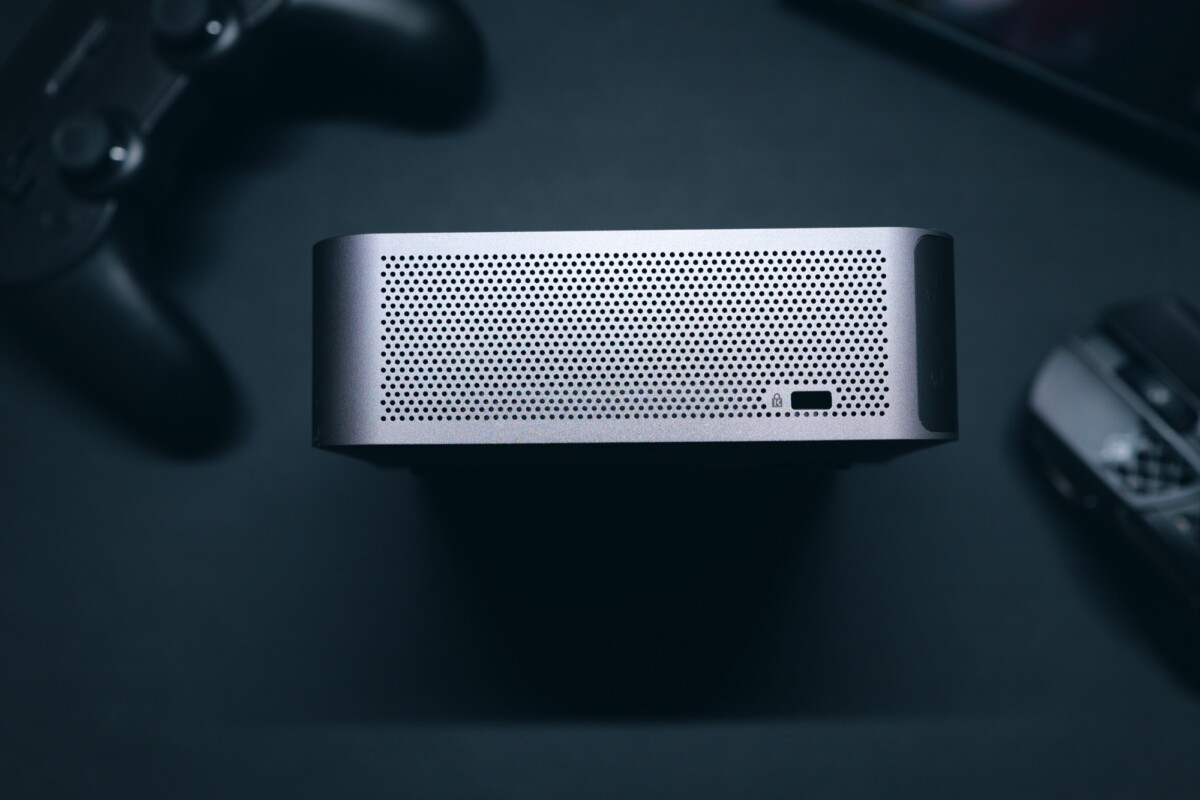
The cooling system IceBlast 2.0 from Geekom seems well designed, with an air inlet on the sides and an outlet on the back. However, we will see later if this system is sufficient to maintain acceptable temperatures under heavy load.

A strong point of the GT1 Mega is its easy access to internal components. By removing four screws under the rubber feet, you can easily access the RAM and SSD slots for possible upgrades. This is an often overlooked aspect of mini PCs and Geekom deserves credit for this approach. Nothing to take off here.
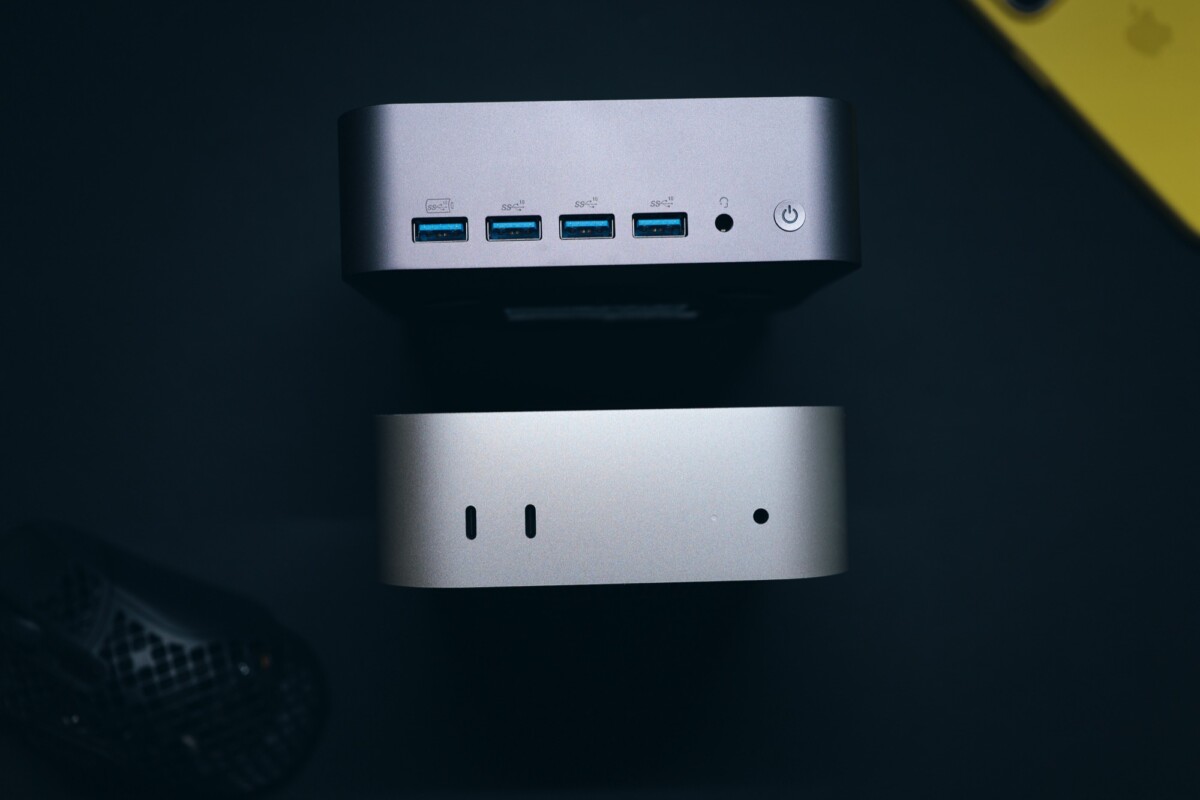
The ability to mount the GT1 Mega behind a screen using the VESA support provided is a significant plus. This allows you to optimize desk space and create a truly minimalist setup. Note however that this is quite common on these mini machines.
Finally, note the presence of a Kensington lock on the side, a valuable feature for physically securing the mini PC in an office environment or at university.
Performances
As can be seen in the benchmark results, the Geekom GT1 Mega displays impressive performance for a mini PC. The Intel Core Ultra 9 185H processor particularly shows its advantage in multi-core tests, they rival many desktop processors.
- Geekbench 6.3 Mono : 2445 points
- Geekbench 6.3 Multi : 13 560 points
- Geekbench 6 OpenCL : 40 202 points
- Cinebench 2024 Mono : 112 points
- Cinebench 2024 Multi : 1055 points
- Procyon UL (Office) : 7 702 points
In terms of graphics performance, the integrated Intel Arc offers decent results for an integrated GPU, but obviously doesn’t compete with dedicated graphics cards. It nevertheless allows you to play recent games at 1080p with low to medium settings. We were able to play Baldur’s Gate at around 60fps at 1080p, Borderlands 3 at 55fps, Shadow of the Tomb Raider only 39fps.
SSD performance is very good, with sequential read and write speeds exceeding 4 GB/s. This is a real asset for loading times and transferring large files.
However, this performance comes at a cost in terms of heat and noise. Under heavy load, the IceBlast 2.0 cooling system struggles to maintain low temperatures. We observed peaks of 93°C on the CPU during prolonged stress tests, which results in slight throttling. The fan also gets quite noisy, we recorded 53.6 dB at full load.
It is important to note that these extreme stress conditions are not representative of typical daily use. In typical tasks like web browsing, office automation or even light video editing, the GT1 Mega remains quiet and temperatures are well controlled.
A strong point of the GT1 Mega is its ability to efficiently handle multiple heavy tasks simultaneously. Thanks to its 16 cores and 22 threads, it can easily juggle between different demanding applications without noticeable slowdown. It’s very smooth and pleasant to use.
The integration of an NPU (Neural Processing Unit) dedicated to AI is an interesting new feature. Although its usefulness is still limited in consumer applications, it could become an asset in the future, especially for tasks like real-time video upscaling or automatic enhancement of video calls. At the moment, it’s quite limited.
We recorded a consumption of 15 watts at start-up, and this rises to 70 watts when we launch a big game for example. For comparison, a Mac mini M4 consumes less than 10 watts at idle, it consumes around 55 watts “at the plug”.
Price and availability
The Geekom GT1 Mega is available for pre-order from 899 euros for the version with Core Ultra 7 155H, 32 GB of RAM and 1 TB of SSD. The high-end version with Core Ultra 9 185H, 32 GB of RAM and 2 TB of SSD is offered at 1150 euros.
These prices place the GT1 Mega at the top of the mini PC basket, but remain competitive given the performance offered. For comparison, the Geekom A8 equipped with an AMD Ryzen 9 8945HS is offered at 1050 euros on Amazon.
It is important to note that Geekom regularly offers promotions and discount codes. At the time of writing this article, the code “GT1MEGA5» allows you to obtain 5% off the purchase price.
Source: www.frandroid.com


